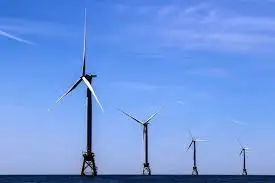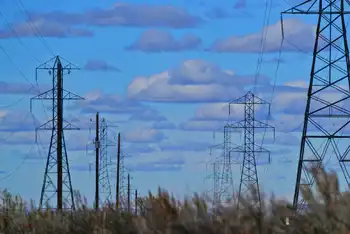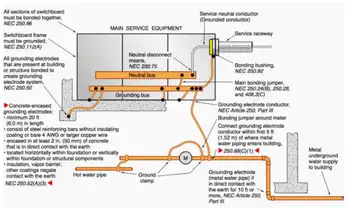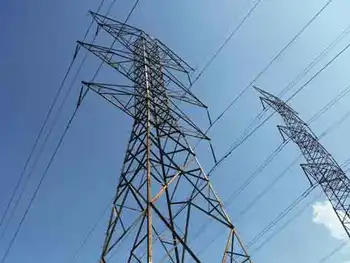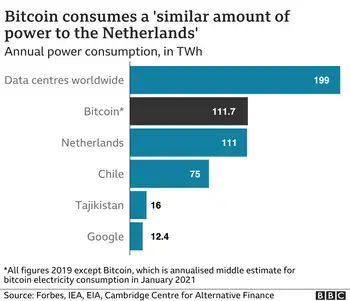Japan hits carbon dioxide record
By Reuters
High Voltage Maintenance Training Online
Our customized live online or in‑person group training can be delivered to your staff at your location.

- Live Online
- 12 hours Instructor-led
- Group Training Available
The increase of 2.3 percent last year, largely due to the closure of Japan's biggest nuclear power plant after an earthquake, will ratchet up the pressure for it to give up its efforts to control emissions through voluntary measures and adopt tougher limits on industry like the European Union and Australia.
With developing countries already questioning Tokyo's political will to rein in emissions and top CO2 polluters China, the United States and India free from Kyoto's 2008-2012 targets, Japan's actions will be seen as a milestone as governments struggle to agree on a successor to the protocol next year.
Emissions rose to 1.371 billion metric tons of CO2 equivalent in the Japanese fiscal year through March, after a 1.3 percent decline the previous year, Ministry of the Environment data showed.
Analysts said immediate action was called for if Japan was to cut emissions by the estimated 13.5 percent needed to hit its 2008-2012 target under Kyoto of just under 1.2 billion tons, down 6 percent from 1990 levels.
"We immediately need a set of effective policies to drive a change towards a more climate-friendly society," Tetsunari Iida, executive director of Tokyo's Institute for Sustainable Energy Policies (ISEP), an environment policy NGO.
Unlike the European Union, Japan has been reluctant to set a mandatory cap or a carbon tax on companies' emissions. Steelmakers and other manufacturers resist such caps, saying they would hurt their products' worldwide competitiveness.
The task of cutting emissions may grow even harder with the world tilting toward what may be its worst recession in decades, one that may divert governments' focus away from climate change and the trillions of investment dollars required to stem it.
Although Japan is set to review next year its current measures, based on voluntary pledges on emission cuts across major industries, that could be too late, analysts said.
A rise was widely expected after the world's biggest nuclear plant, run by Tokyo Electric Power Co (TEPCO), had to suspend operations following a July 2007 earthquake, forcing utilities to meet demand by burning more coal, oil and natural gas, all of which emit far more greenhouse gases.
The plant is expected to remain shut until beyond next March.
While Japan's utilities have stepped up their buying of U.N. carbon offsets, the data suggests they may have to buy more if Japan is to meet its global pledge, potentially driving up global carbon credit prices.
While Tokyo has worked hard to drive utilities toward cleaner forms of energy, it has also struggled to convince power companies facing tough times to hasten investments in new nuclear power stations with low emissions.
The government also faces public distrust about Japan's scandal-plagued nuclear industry, including safety fears over the numerous earthquakes the country suffers each year.
J-Power said it had delayed the start of a major new nuclear unit by two years, the latest in a string of delays to new projects.
Yet long term strategies are key to resolving the problem, analysts say.
"There will be no reduction in carbon emissions until there are viable ways of replacing energy supply and energy growth with large-scale renewables," said climate change expert Barry Brook, of the University of Adelaide in Australia.
"That is where the focus of international action should now be."
Iida said the fact that two new coal plants were being built in Japan underscored the need for sterner government action.
The world's efforts to carve out a pact to follow Kyoto should intensify ahead of a key meeting in Copenhagen next December that negotiators have set as a deadline for establishing a post-2012 framework.
But the debate comes at a difficult time, with developed nations heading into recession, which may help curb emissions by reducing power demand, but also risks distracting from the longer-term task and fostering a return to cheaper carbon energy.
The world needs to invest $26 trillion in energy infrastructure by 2030 just to maintain fossil-based energy supply, the International Energy Agency said.
Tokyo has set companies and households a private-sector emissions target, to be met by voluntary steps, of 1.254 billion metric tons, which will be offset by a further 68 million tons a year by government spending on domestic forest conservation and credits from investing in clean technology in poorer countries.
The key to Japan's voluntary program is the electric power industry, which has pledged to cut CO2 emissions to an average of 0.34 kg per kilowatt hour a year through to 2012.
But in the year to March that figure stood at 0.453 kg due to the closure of TEPCO's Kashiwazaki-Kariwa nuclear power plant.
Even if the power industry met its voluntary target last year, Japan's emissions would still have exceeded its target, the environment ministry said.





